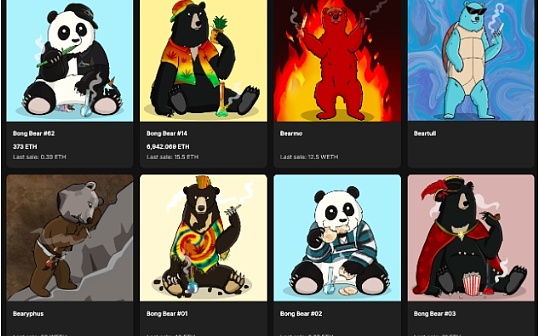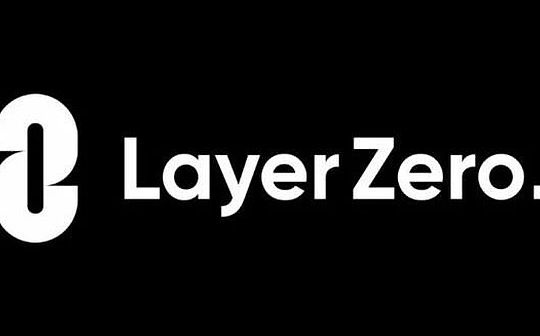
Source: Chain Tea House
LayerZero is an interoperability protocol that uses new technologies to immediately verify cross-chain transactions to connect different blockchains, overcome the challenge of liquidity fragmentation, and aims to create paths and platforms for communication between independent blockchain networks.Enable it to share assets, status, liquidity, etc.
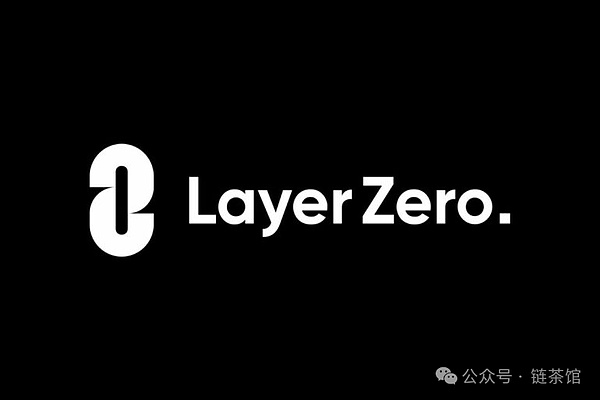
LayerZero was founded in 2021 by a team of engineers led by Bryan Pellegrino (co-founder and CEO), along with Caleb Banister (co-founder) and Ryan Zarick (co-founder and chief technology officer).
At that time, users were forced to split their resources and liquidity due to the isolation of numerous blockchains, limiting their choice of transferring liquidity and state between closed ecosystems.
Therefore, LayerZero Labs’ mission is to solve the interoperability problem between blockchains and provide decentralized applications (dApp) developers with the ability to messaging on multiple blockchains without intermediary.LayerZero adopts an innovative architecture that includes ultralight nodes, standalone oracles and repeaters to transfer messages between chains safely and efficiently.
1. Operating principle
LayerZero uses a set of smart contracts called LayerZero endpoints on each supported chain.In addition to connecting all the chains supported by LayerZero, they can be deployed on new chains to incorporate them into the network.Cross-chain lending is an example where transaction details are sent from one blockchain (such as Ethereum) to the LayerZero endpoint on another chain (such as Avalanche), consisting of independent off-chain entities, Oracle (oracle) and Relayer (Repeater) facilitates.
Specifically, the main components that the LayerZero protocol runs include:
-
Relayer: Responsible for sending transaction proof and transaction data from chain A to chain B, and matching the block header hash of chain A and chain B at the same time.
-
Oracle (Oracle): Cooperate with decentralized oracles such as Chainlink to provide reliable data transmission for the LayerZero network.
-
Endpoints: A set of smart contracts divided into communicator, validator, network and library modules.The library module contains the code for each blockchain network. When a new network needs to be added, you only need to update the library module.It is a facility that directly interacts with users or applications, or can also be regarded as a series of smart contracts that process logic.These endpoints are responsible for handling message transmission, verification, and reception.Their purpose is to ensure effective delivery when users send messages using protocol.
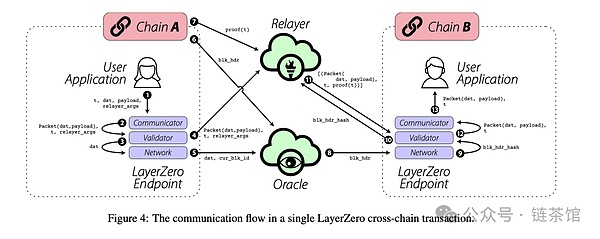
LayerZero’s messaging process relies on two main entities: oracles and repeaters.When a user agent (UA) sends a message from chain A to chain B, the message is first passed through the endpoint on chain A.The endpoint then notifies the specified oracle and repeater of details about the message and its target chain.The oracle passes the block header to the endpoint on chain B, while the repeater submits the transaction proof.After verifying the proof on the receiving chain, the message is forwarded to the final destination address.
LayerZero’s security is based on the philosophy that if two independent entities can confirm a transaction on one chain, the other chain can trust and execute the transaction.After receiving the transaction details, Oracle creates a block header, and Relayer generates a proof independently.If both parties agree, the transaction is deemed valid and completed on the second chain.
2. Functional and its ecological use cases
1) Bridge
Bridging is the most popular interoperability solution at present.Cross-chain bridge allows asset holders to transfer assets between different Layer 1 and Layer 2 platforms.There are many reasons why investors bridge assets to another network, such as leveraging the fee structure on the target chain, or benefiting from applications on the target chain.Thanks to cheaper Proof of Stake (PoS) chains such as Polygon, Fantom, and BNB Smart Chain (BSC), bridging is more important than ever.But in addition to the poor security already discussed, the current bridge platform still has shortcomings.
The capital intensity of operating bridges lies in the need to develop new infrastructure for each bridge direction.For example, a bridging platform that supports 5 networks requires writing 5 different codes and running 5 intermediate chains or light nodes.
LayerZero claims to solve this problem; first, ultralight nodes are less demanding, and common data exchange means that bridges can be created for multiple networks using the same infrastructure and code.Such bridges are more efficient and economical, without the need to use different code sets to bridge different chains.
2) Aptos Bridge
Aptos was launched in October 2022 with Aptos Tokens (APT) as the native currency of the network.Aptos has gained fame mainly because of its unique technology it uses and its connection to Facebook’s failed Diem project, as Aptos’ modified Move language was originally developed for the Diem blockchain.

As of now, Aptos has a market capitalization of more than $3 billion, and DefiLlama reports that TVL on the network is $330 million in assets, making its ecosystem an important one.However, Aptos is not EVM compatible, and that’s where LayerZero comes in.The LayerZero Aptos bridge was launched shortly after the main network mined its Genesis block, connecting Aptos with other EVM-compatible networks and even Ethereum networks.
Aptos bridge allows users to bridge Aptos-backed assets with other networks such as BNB Smart Chain (BSC), Avalanche, Polygon, Ethereum, and other Ethereum Layer 2 networks such as Optimism and Arbitrum.According to platform information, the bridging process is expected to take 2-5 days.
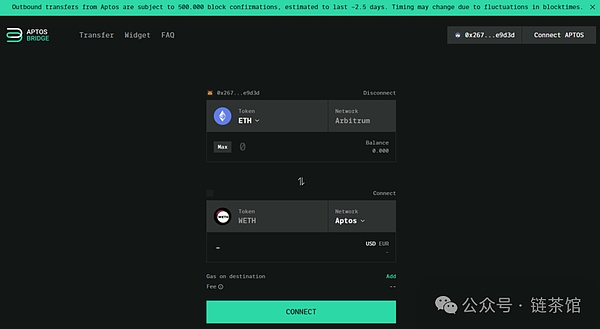
3) Stargate Finance (STG)
Stargate is a bridge platform developed using LayerZero interoperability technology.Stargate enables blockchain enthusiasts to transfer assets across chains in their original form and ensure finality.
This is achieved by Stargate using a unified pooling system to handle transfer requests across support chains.Liquidity providers pledge their assets into Stargate’s single asset pool and receive pledge rewards in the form of stablecoins, which come from fees paid by users to bridge assets on the platform.
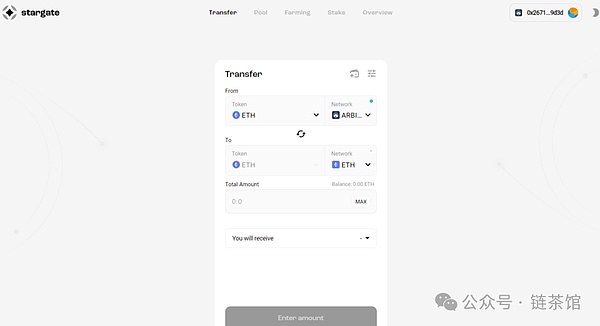
The bridge currently supports approximately 8 networks, including layer 2 vertical scaling solutions such as Arbitrum and Optimism.Full-chain technology provides a layer for supported tokens that enables them to run seamlessly and move across other chains.Stargate Finance also provides cross-chain exchange where users can send assets from the source network and receive and receive another asset on the target chain.
Data from the project page shows that assets worth more than $200 million have been locked on the platform.This reflects the liquidity of the pool serving bridge requests.Stargate Token (STG) is a native token of the Stargate ecosystem for reward and governance purposes.Liquidity providers can stake their LP tokens and receive additional rewards in STG tokens.
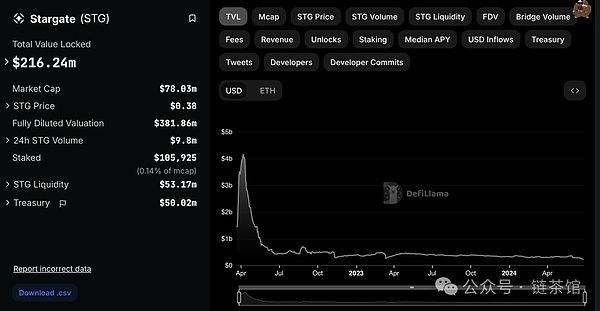
To contribute to project governance, STG holders must stake their tokens on the governance portal to obtain VeSTG.This is used to vote on improvement proposals.STG is active in trading on centralized exchanges and decentralized exchanges.You can click here to view active trading pairs for STG tokens.
3. Cross-chain exchange and unified liquidity
Investors who want to buy crypto assets on different networks first need to bridge the unified assets to the target chain and then use the decentralized exchange on the target chain to make purchases.LayerZero’s test bridge can directly redeem Layer 2 solutions such as Ethereum and Arbitrum and Optimism in the main network to Goerli ETH.Similar systems can be developed on a larger scale to support cross-chain exchanges and eliminate the process of bridging and connecting to exchanges on the target platform.
Current bridging uses separate liquidity pools, for example, different liquidity pools serve bridge requests from Ethereum to Polygon PoS chains and bridge requests from Fantom’s Opera chain to Polygon.This may lead to efficiency differences.Liquidity on the Ethereum to Polygon bridge may be sufficient to handle all requests, while the assets on the Fantom to Polygon bridge are not sufficient to complete the bridge request immediately.
LayerZarick, co-founder of LayerZero, mentioned that LayerZero can leverage a unified liquidity pool to meet bridge requests from multiple target chains.
“LayerZero achieves the ultimate goal of bridging: to achieve unified liquidity on all chains and ensure finality on the source chain. This means that when a user transfers assets from chain A to chain B, the user can guarantee that they can, and LP providers can receive fees from all transactions incoming chain B, regardless of the source chain.”
1) Base
Base is an Ethereum Layer 2 solution launched by Coinbase, using Optimism’s OP Stack software.Base provides a simple integration path for decentralized applications, ensuring the security, stability and scalability of decentralized applications, while providing users and assets from Ethereum L1, Coinbase and other interoperable chains.Convenient access.
The LayerZero protocol is online on Coinbase’s Base main network, promoting cross-chain communication through full-chain interoperability solutions, including token exchange, transfer and other functions, improving the overall efficiency and accessibility of the decentralized ecosystem.
There are many practical applications released by the collaboration between LayerZero and Base. For example, the Parallel project has used the LayerZero protocol to move tokens smoothly between Base and Ethereum, demonstrating the practicality and efficiency of the protocol.
2) SushiSwap
SushiSwap is a multi-chain decentralized exchange powered by AMM.It claims to have over 400 crypto assets available for instant decentralized exchanges.Its liquidity pool locks in crypto assets worth more than $200 million.These statistics come from the official website of the project and are valid at the time of writing.Its governance and reward system is provided by SUSHI tokens.
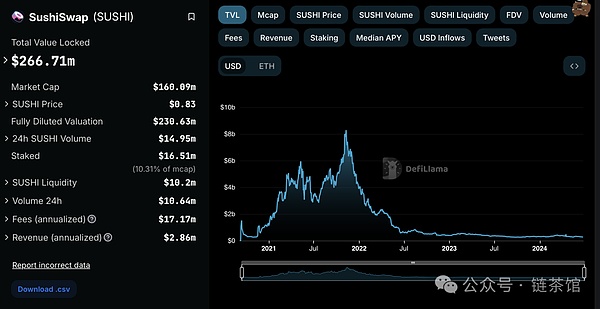
In July 2022, SushiSwap announced the launch of SushiXSwap.The new platform is developed with LayerZero’s interoperability technology to address the pain points of multi-chain DeFi applications.In the announcement, SushiSwap reflects on the main issues affecting cross-chain interactive facilities and how to deploy LayerZero’s technology to solve this problem.At the time of release, SushiXSwap supported asset bridging across Ethereum, Fantom, and about 5 other networks.
LayerZero’s technology enables SushiSwap to develop a unified liquidity system that brings together resources on the supported network to meet asset transfers and ensure that these transactions are completed in the shortest possible time.As an existing liquidity pool project, SushiSwap uses its liquidity pool to power the bridge between the chains where the project is located, solving the problem of liquidity dispersion.
SushiSwap also solves the cost structure problem of asset bridges by providing users with the cheapest cross-chain transfer routes.This cost-effective solution leverages Stargate Finance’s bridging infrastructure to find the cheapest route to transfer assets from the source chain to the target chain.SushixSwap will also use Stargate’s facilities to expand its bridges and extend to other networks over time.Cross-chain exchange can also be performed on SushiXSwap.
4. Full-chain tokens and NFTs
Design-wise, LayerZero’s technology creates a true zero layer: an ecosystem that can interact with any other network, share resources without being restricted by the platform – the full chain.LayerZero can be the first to launch “non-native” crypto assets.Non-native means that they can be used on each chain without transplanting them to the target chain and returning by changing their original form.Full-chain tokens and NFTs will be unique and can enjoy faster adoption as investors can easily buy and store them on their favorite blockchains.
1) TofuNFT
TofuNFT is a multi-chain NFT marketplace deployed on more than 20 blockchain networks.NFT enthusiasts can list their NFTs on supported networks and sell them on TofuNFT’s market, and can also collect work by other NFT creators.TofuNFT is selected as the LayerZero ecosystem for the development of the full-chain NFTS market
Like the full-chain homogeneous token (OFT), full-chain NFTs are non-native NFTs that can be easily transferred across different networks in their original form.TofuNFT’s full-chain market has received a small list of full-chain NFTs, such as the LayerZero punk with a base price of 0.015ETH at the time of writing.
2) Oasys
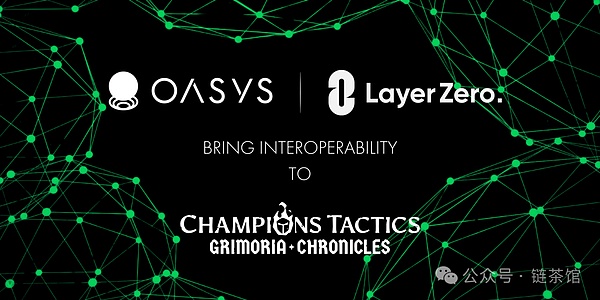
Oasys is a gaming-optimized blockchain that uses Ethereum’s layer 2 scaling solution to provide highly scalable layer 1 hubs and dedicated layer 2.The ecosystem provides game developers with a secure and scalable blockchain infrastructure to create more efficient, secure, and interoperable games.
Oasys’ validators include leaders in gaming and Web3 fields such as SEGA, Ubisoft, and Yield Guild Games, who are the initial validators of our Proof of Stake (PoS)-based blockchain.Oasys’ professional blockchain team, combined with well-known figures in the gaming industry, is revolutionizing the gaming industry.
Oasys is committed to creating an ecosystem of distribution and development of games for gamers and developers, solving the challenges game developers face when building blockchain-based games.The company’s trio approach includes a fast network powered by the gaming community, a scalable network powered by AAA game developers, and a blockchain that provides the best user experience with fast transactions and zero gas fees.This approach prepares participants to get into Oasys and play the game.
After integration with LayerZero, Oasys will use LayerZero’s interoperability technology to improve cross-chain operation of games and NFTs, providing a richer and inclusive gaming experience. LayerZero has also achieved homogeneity through the Omnichain Homogenized Token (OFT) standard.Token flow.Bryan Pellegrino, co-founder and CEO of LayerZero Labs, added: “LayerZero’s addition of endpoints to Oasys is a major leap in in-game asset interoperability. LayerZero is committed to connecting communities and making games that players love on different networksMore accessible and enjoyable to enhance players’ abilities.”
Overall, LayerZero is primarily used by decentralized application developers who need to communicate across multiple blockchain networks.The LayerZero ecosystem also includes projects of different categories, covering NFT, payment, wallet, bridge, infrastructure, DeFi, DEX, GameFi and other aspects, and the ecosystem is relatively prosperous.
5.ZRO Tokens
$ZRO tokens are the main tokens in the LayerZero ecosystem and are used to promote various activities and incentives within the ecosystem.
$ZRO tokens play a variety of roles in the LayerZero ecosystem, including:
-
Incentives and Rewards: Used to reward participants and contributors in the ecosystem.
-
Governance: Users holding $ZRO tokens can participate in the governance decisions of the protocol.
-
Payment and Transactions: Used to pay for transaction fees within cross-chain operations and other ecosystems.
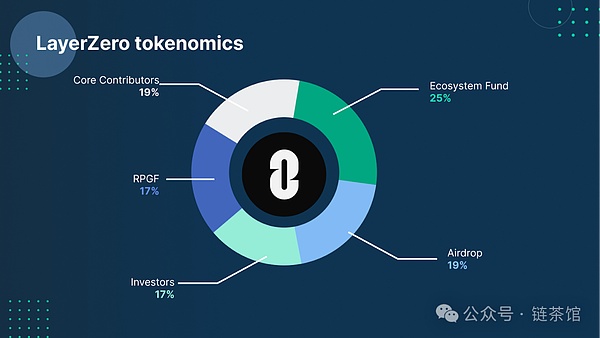
The initial allocation of $ZRO tokens is as follows:
-
Ecosystem Fund: 25% (2500)
-
airdrop: 19% (1900): 5% of them are used for IDO
-
Core Contributors: 19% (1900)
-
investor: 17% (1700)
-
RPGF (Retroactive Public Goods Funding): 20% (2000)
The circulating supply of $ZRO tokens is 110,000,000 ZRO, the total supply is 1,000,000,000 ZRO and the maximum supply is 1,000,000,000 ZRO.
The release cycle of $ZRO tokens is shown in the figure below:

6. Team/financing situation
Bryan Pellegrino, co-founder and CEO of LayerZero Labs, graduated from the University of New Hampshire with a degree in computer science.He served as a resident entrepreneur, lead engineer of machine learning architecture and co-founder of OpenToken.
Co-founder Caleb Banister, specializes in writing and auditing smart contracts for blockchain-related projects.Caleb is a professional Solidity developer with a bachelor’s degree in computer science from the University of New Hampshire.He is a skilled Java and Linux programmer who is building the future and multichain meta universe.
Another co-founder, Ryan Zarick, is the chief technology officer of LayerZero Labs, an experienced software developer and entrepreneur with over 10 years of experience in the tech industry.He co-founded Minimal AI, Coder Den and 80Trill and served as CTO at Buzzdraft.He holds a Master of Computer Science from the University of New Hampshire.
Since its establishment, LayerZero has successfully completed multiple rounds of financing, with a total financing amount of US$263 million and its market valuation has also reached US$3 billion.
In its latest round of Series B financing, LayerZero successfully raised $120 million on April 4, 2023, which brought its valuation to $3 billion.The financing attracted the participation of many well-known investors, including Andreessen Horowitz (a16z), Sequoia Capital and Circle.
Previously, LayerZero also completed a round of A1 financing on March 30, 2022, with a financing amount of US$135 million and a valuation of US$1 billion.The main investors in this round include Andreessen Horowitz (a16z) and Sequoia Capital, showing market confidence in LayerZero technology and development.
Earlier on September 16, 2021, LayerZero conducted a Series A financing, successfully raising $6 million with a valuation of $50 million.Through these early financial support, LayerZero laid the foundation for its blockchain interoperability and promoted the initial development of the project.
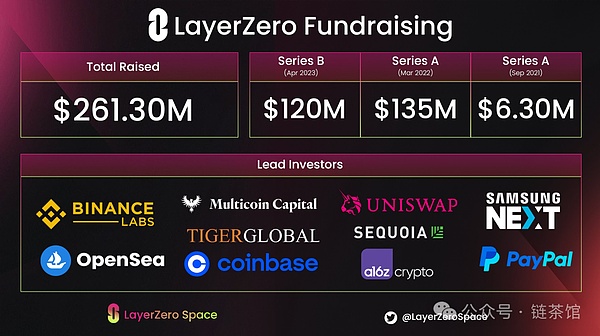
7. Project evaluation
LayerZero belongs to the Interoperability track in blockchain technology.The goal of this field is to solve the communication and asset transfer problems between different blockchain networks and enhance the interconnection of the blockchain ecosystem.
There is also a Wormhole that is similar to LayerZero.
Created by Jump Crypto, Wormhole is a decentralized cross-chain protocol designed to enable data and token transmission between different blockchains through a common messaging protocol.支持的区块链包括以太坊、Solana、Sui、Injective等。
The Wormhole consists of 17 highly verified Guardian nodes that must confirm each transaction to ensure the security of the system.It also supports cross-chain tokens and NFT transfers, processing more than 1 billion cross-chain messages, and interoperating with Cosmos and Polkadot’s message systems.In addition, wormhole also supports the transfer of NFT assets between multiple blockchain networks.
Wormhole is arguably the most mature protocol on the track and the only one to unconditionally approve it to be used by Uniswap.It also claims to handle over a billion cross-chain messages and can interoperate with Cosmos and Polkadot messaging systems.While Wormhole may not be as valuation as LayerZero, it has the most adopted protocols and the momentum doesn’t seem to change anytime soon.
但是LayerZero和Wormhole还是有不同之处的,Wormhole主要依赖于固定的Guardian节点网络,较少的灵活性,LayerZero可以自由选择预言机和中继器,提高了系统的灵活性和模块化;Wormhole采用依赖信任的技术方案(包装资产存放在桥链上,由多重签名账户控制),而LayerZero使用轻节点在目标链上运行,这些节点能够打包并一次性发送所有交易,直接在链间传输原生资产, avoiding the complexity and risks of assets transfer between different chains.
Therefore, Wormhole was exploited by hackers in 2022, resulting in a loss of 120,000 ETH (about 325 million US dollars), but its security has been significantly enhanced since then, and LayerZero’s cross-chain system has not been successfully attacked by hackers.
In addition to security, LayerZero has the following advantages.
-
Scalability:LayerZero is designed with scalability in mind, can handle high transaction volume without affecting performance, suitable for large-scale applications and enterprise integration.
-
Developer friendly:提供了一套强大的工具和API,便于开发者构建和部署跨链应用程序。
-
Cost-effective:通过LayerZero的架构,用户可以在不产生高额成本的情况下实现跨链功能。
-
Ecosystem support:LayerZero受到了区块链社区和行业利益相关者的广泛支持,形成了一个充满活力的开发者、用户和合作伙伴的生态系统。
虽然 LayerZero 的设计具有可扩展性,但在处理极高的交易量或复杂的跨链操作时可能会牺牲性能。确保在所有条件下实现最佳性能仍然是该协议必须不断解决的挑战。此外,LayerZero 的安全模型依赖于外部验证器,例如预言机和中继器。虽然这增强了去中心化和安全性,但如果这些验证器受到损害,也会引入潜在的故障点。确保这些外部实体的可靠性和可信度对于协议的长期可行性至关重要。
However, LayerZero is still in the early stages of the project and has just issued coins recently, so there is still potential for future development.As long as its solutions continue to work the way it claims, the LayerZero ecosystem will surely become even bigger as more projects adopt well-established interoperability solutions.


